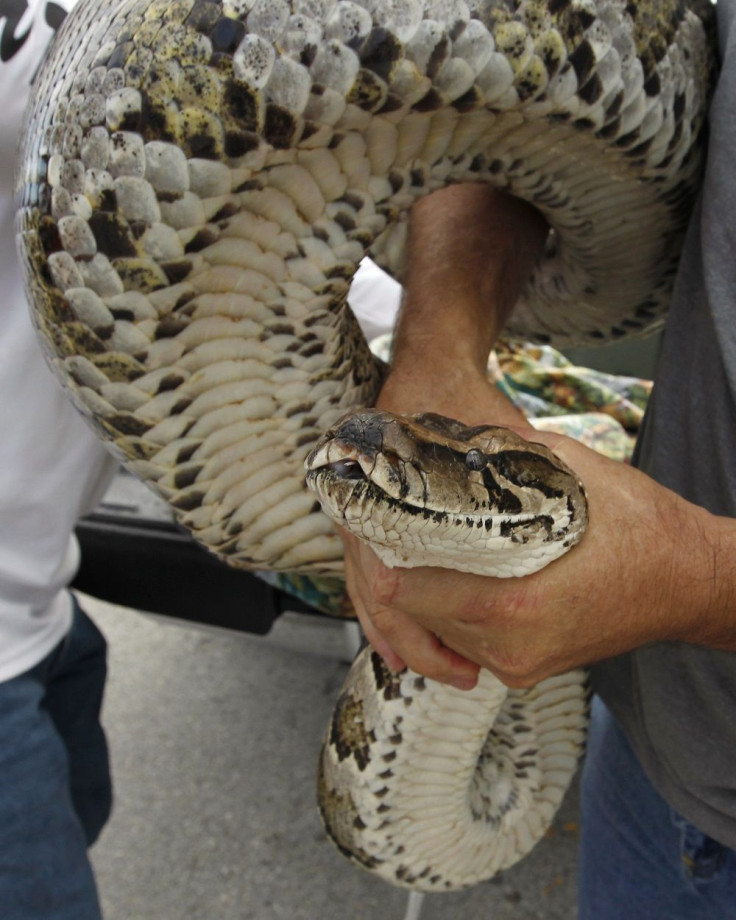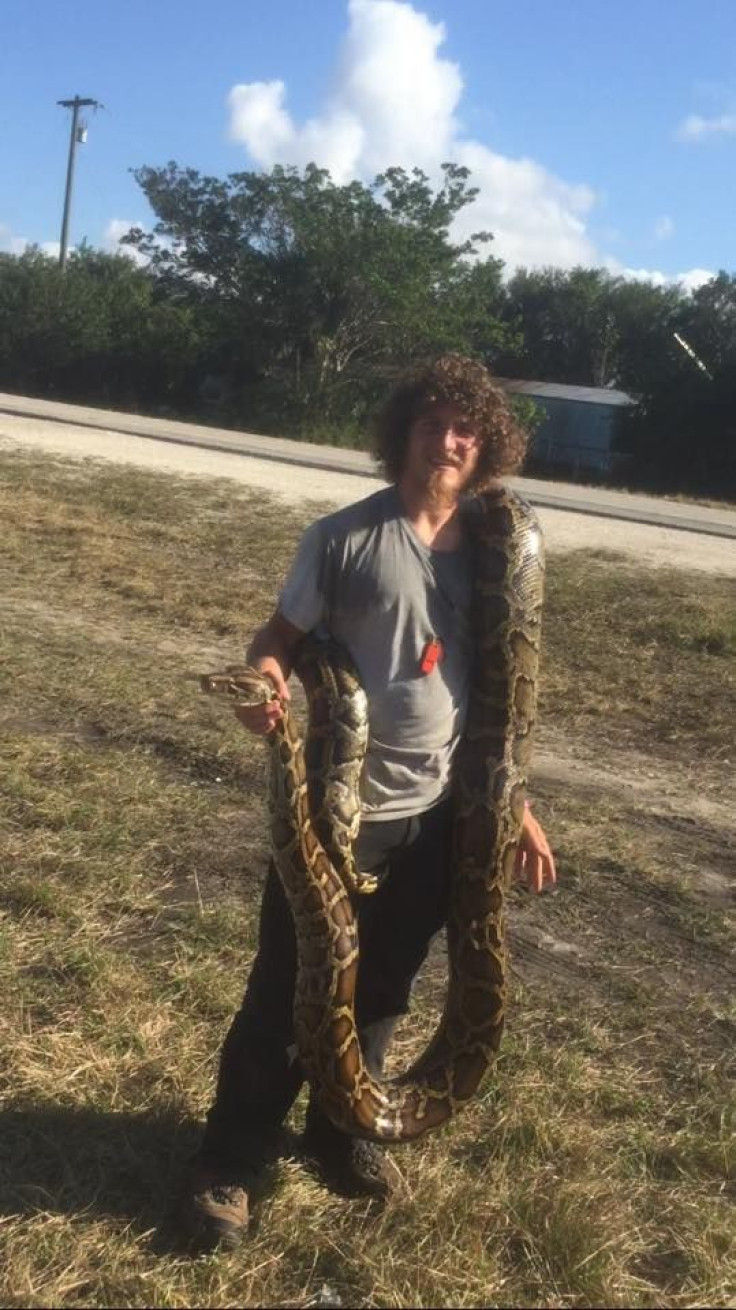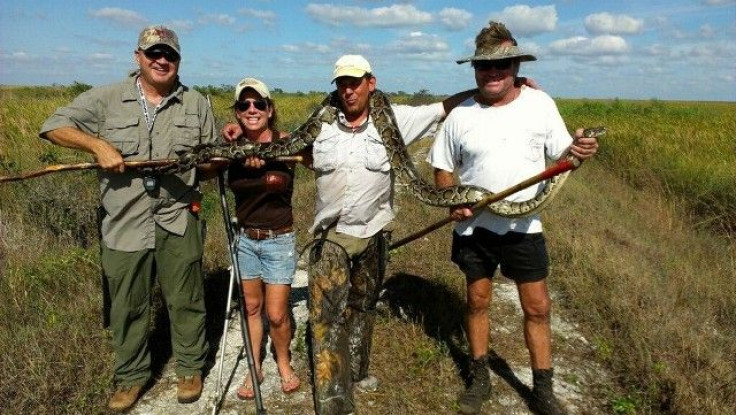Florida’s 2016 Python Challenge yields 106 loose snakes

To help Florida reduce the number of loose snakes, the state’s Florida Fish & Wildlife Conservation Commission organised a Python Challenge which drew 1,000 participants from 29 states. The objective was to remove Burmese pythons from the wetlands of South Florida.
Daniel Moniz, a resident of Bricktown, New Jersey, got a cash prize of $3,500 (AUD$4,887) for catching the longest python by an individual. Moniz, who was laid off during winter from his landscaping job, collected 13 pythons.

The 13-foot, 8.7-inch python was not an easy catch. Moniz has bite scars on his arm, neck and face as proof of the challenge. That one almost got away as it tried to swim to escape, but Moniz – who went through the commission’s online training and biked for a month over 40 miles daily over levees through the wetlands – dove on top of the reptile and then stuffed the animal inside a pillow case, reports Kansas City.
However, there was a longer snake, measuring 15 feet, caught by a team led by Sarasota resident Bill Booth. The team, which got $5,000 (AUD$6,980) cash prize, was also awarded by the commission for bringing in the most number of snakes at 33 pythons and the longest catch by a team. The challenge started on Jan 16 and ended on Feb 14.
Because thousands of pythons are believed to be slithering in Everglades, Florida’s beleaguered wildlife, the 106 is a dent in the total number of snakes roaming in the area. However, the 2016 challenge catch is a 36 percent improvement from the 68 caught in the 2013 challenge.

However, Ron Bergeron, wildlife commissioner, says it does not really matter it the challenge does not control the number of Burmese pythons in the region because what matters most is the campaign created awareness on Florida’s environmental concerns. “Whether they’re fishermen or they’re hunters or they’re hikers or they’re birdwatchers – they’re all looking for the python,” Bergeron points out.
The University of Florida is still analysing the contents of the snakes’ stomachs. Among the prey the university staff have identified are a fawn, wood stork and other big wading bird. After the university finishes with the necropsies, the hunters could get back the dead snakes. About one third of the snake corpses have been turned over to Brian Wood of All American Gator in Hollywood.
Half of them asked Wood to make from the snake skin a wall décor, a pair of boots and a purse at a cost much lower than branded snake skin accessories. The other half sold the snakes to Wood for $150 (AUD$209.50) a piece.
Bergeron concludes, “We are excited to see so many people contribute to this important effort to conserve Florida’s natural treasure, the Everglades ecosystem … We need to keep this momentum going now that the competition is over.”






